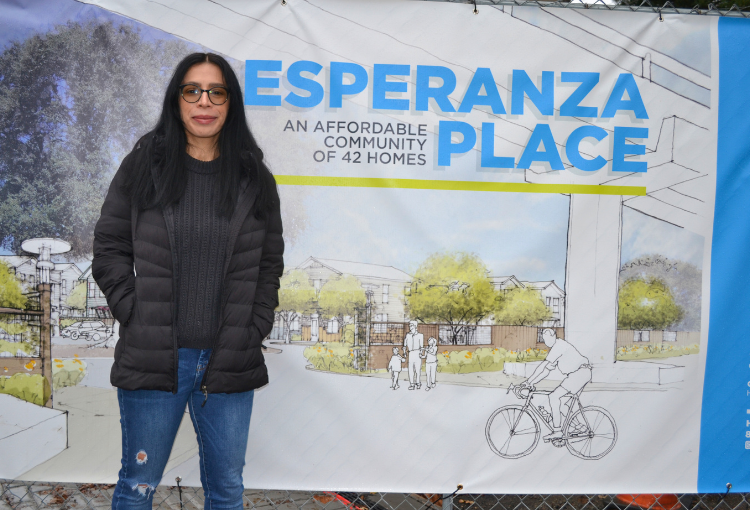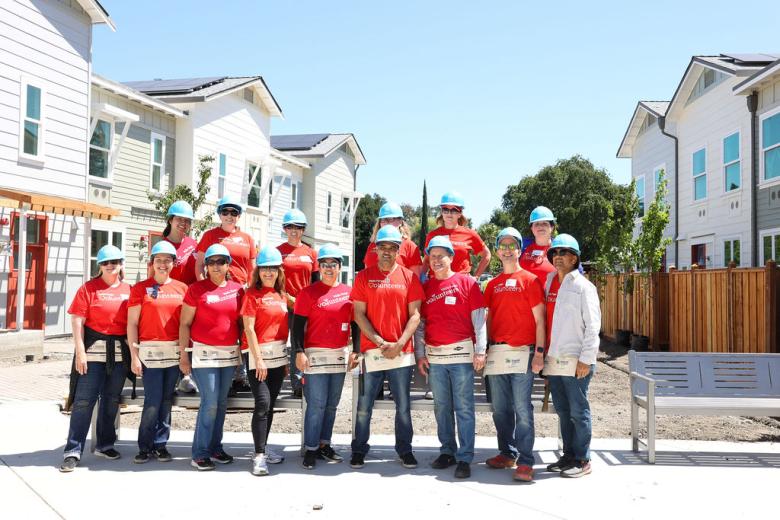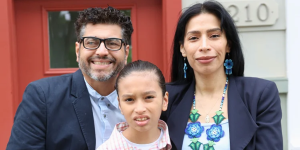Craig Molyneaux
Chief Financial and Administration Officer
A bright and healthy future ahead
Yulisa and Guillermo yearn for a home where their son, Cesar, will have the freedom to play and grow. Now the couple is building an affordable Habitat home with the help of Wells Fargo volunteers and the Wells Fargo Foundation.
Yulisa and Guillermo dream of the day when their son, Cesar, has a room that brings him happiness and comfort. That day is coming soon, once they move into their future home at Habitat for Humanity East Bay/Silicon Valley’s Esperanza Place.
Yulisa works as a vice president of a labor union, while her partner, Guillermo, stays home full time to care for Cesar.
“Cesar has autism, and there are sensorial things that he needs that we don’t have the space here for in our apartment,” Yulisa says.
Guillermo plans to mount, for example, on the ceiling of Cesar’s new room, a hammock-like apparatus whose pendulum motion will help the 12-year-old center himself — a customization that is not possible to implement in their rental.
“It’s something that’s going to make him feel better and have him be able to thrive in the new space,” Guillermo says. “And, for us, it’s just peace of mind knowing that he’s happy.”
Homeownership within reach
As Bay Area residents, Yulisa and Guillermo were accustomed to continually skyrocketing rental prices; purchasing a home affordably seemed impossible until Habitat. “We’re looking forward to the security of not having to depend on our landlord’s decision to raise the rent and then us being pushed out,” Yulisa says. “We’re not going to have to worry about being displaced.”
Yulisa and Guillermo also look forward to being in an environment where neighbors look out for each other. “Building community is going to be really important to make sure that Cesar has some sense of community that he doesn’t have now, which is going to help him flourish,” Yulisa says.

Yulisa stands in front of a sign for Esperanza Place, a community where her family and other future Habitat homeowners are building a safe and affordable place to call home.
Laying the foundation for a resilient neighborhood
Yulisa and Guillermo began connecting with their future neighbors on the build sites of their and other Habitat homes at Esperanza Place. During those builds, the couple prioritized forming relationships with their future neighbors.
“When you look at who Yulisa and Guillermo are, their goals for their family’s future and what they want to give to others — they’re just delightful and wonderful human beings,” says Janice Jensen, Habitat East Bay/Silicon Valley CEO. “They truly understand what it means to build community.”

Wells Fargo employees volunteered alongside future Habitat homeowners to help build affordable homes at Esperanza Place. (Photo credit: Jodi Foucher Photography)
In addition to new neighbors, Yulisa and Guillermo also worked alongside Wells Fargo volunteers who helped build homes in the development. Anne Woo-Sam, a Wells Fargo product manager, pitched in on projects like landscaping and painting.
“It’s pretty incredible that as a volunteer you can help reduce the cost of a home so that it becomes affordable for families who work in the community. Commuting far to work means having to spend a lot of time away from their families,” Anne says. “But living close to where they work means they can take that time to create memories.”
In addition to volunteer support, funding from the Wells Fargo Foundation helped make Yulisa and Guillermo’s home more affordable by offsetting the construction cost of their home. Since 2015, Wells Fargo and the Wells Fargo Foundation have donated more than US$102 million to the Habitat network in support of affordable and sustainable housing.
A framework for joy and wellbeing
Once they move into their Habitat home, Yulisa and Guillermo look forward to making precious new memories with Cesar in a space where he can be more comfortable. “That’s what we’re trying to do — set up an environment that will be more conducive for him to be connected to us,” Guillermo says.
Yulisa also says their new Habitat home will give her family the financial freedom to build savings that will help support Cesar’s care well into adulthood. “We haven’t been able to, and saving is important to us,” she says.
(Photo credit for top photo: Jodi Foucher Photography)

A bright and healthy future ahead


